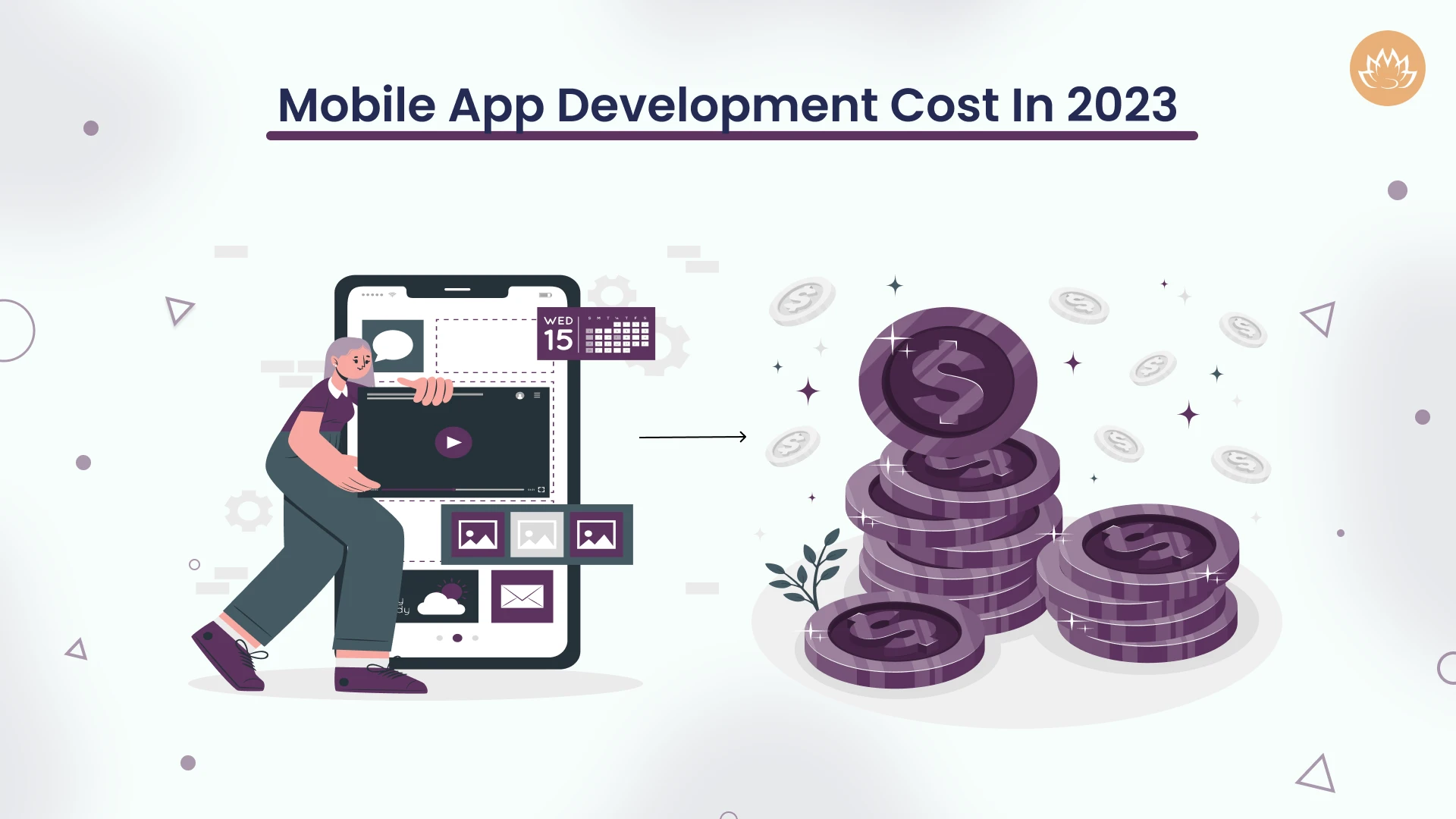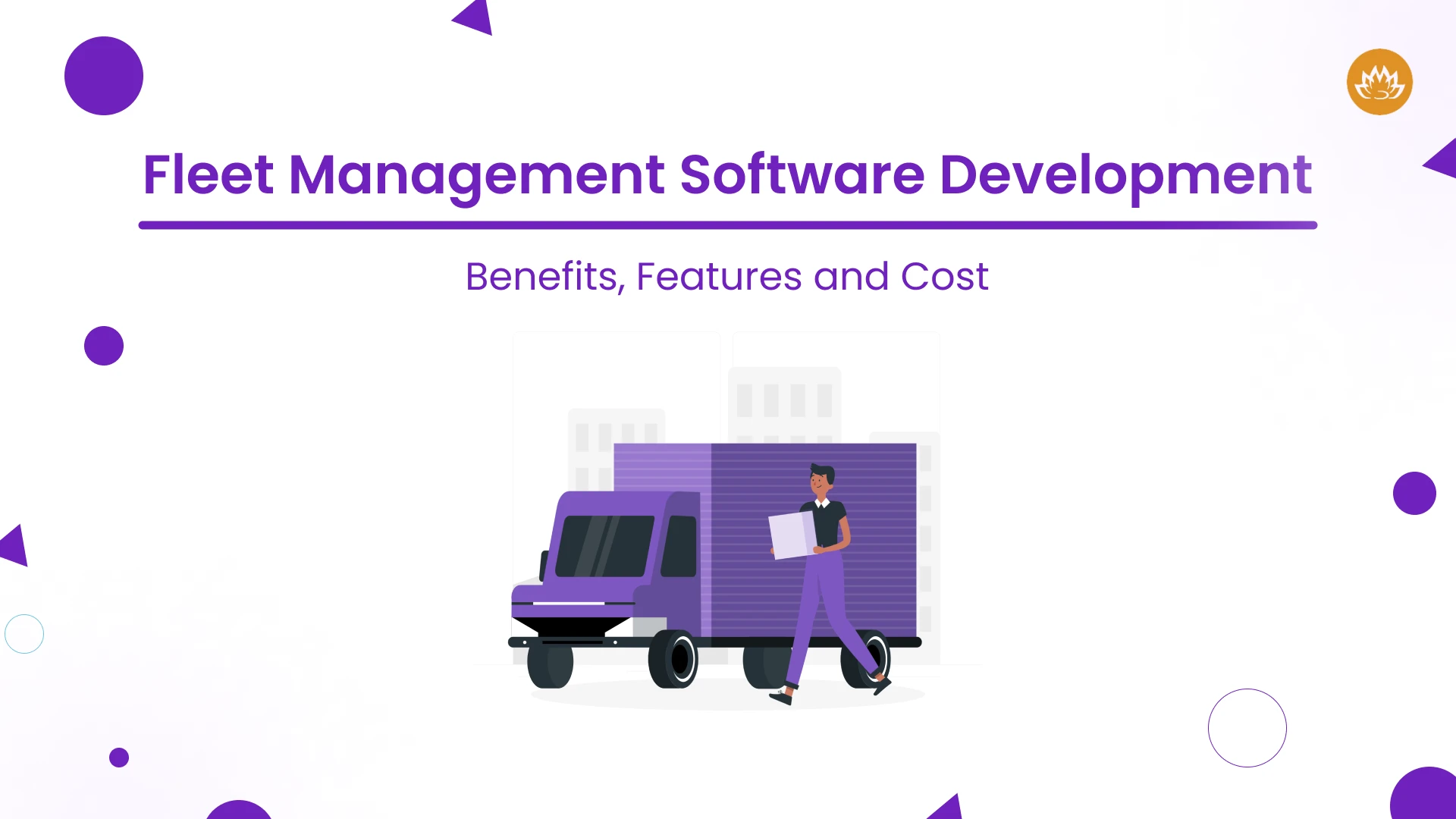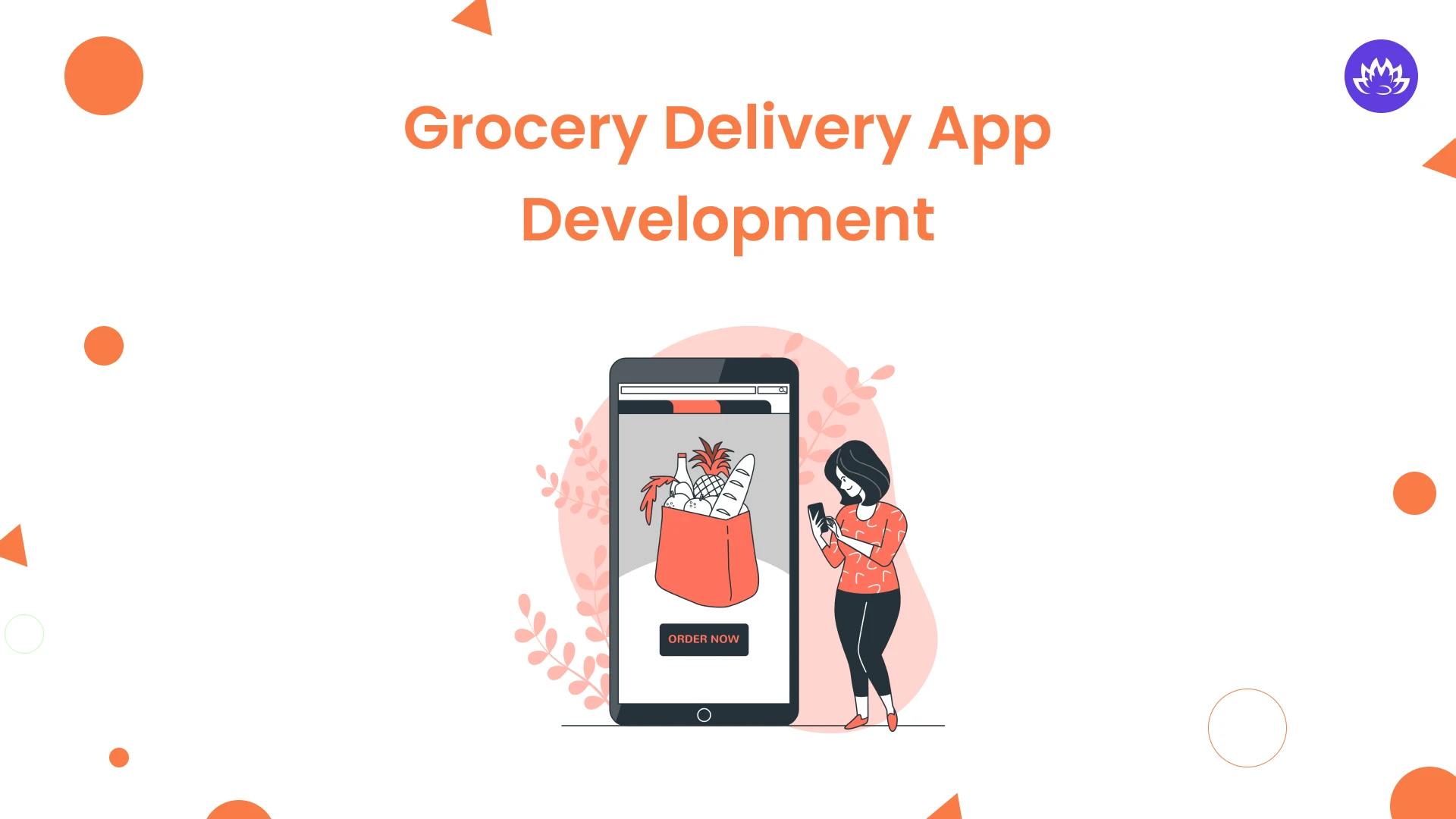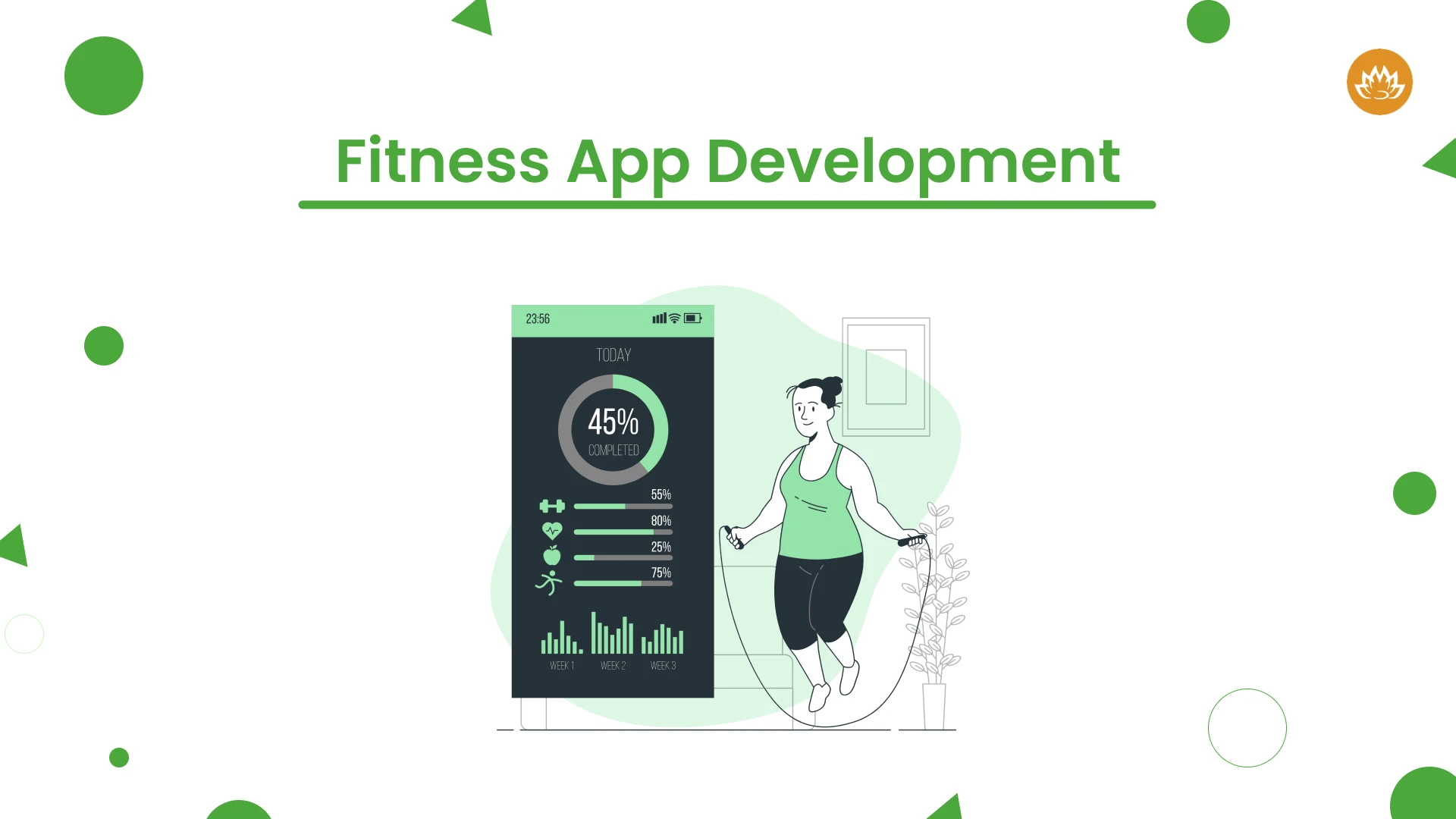Mobile applications have become an indispensable component of our routine. For instance, there are apps that help you order food or book a cab. Therein lies a question in your mind. Who bears the cost to develop an app in 2023? With the increasing need for mobile applications in our society today, it is imperative for both individuals and companies to realize what the expenses entail.
These mobile applications have changed how people understand technology. These are convenient, efficient, and full of opportunities. The importance of mobile applications is growing, and almost every company understands that its business will go bankrupt without its own application. Nonetheless, creating a mobile application is not easy, but a combination of a few parameters determines its budget.
It is crucial to appreciate the cost considerations should one be planning to develop an app in 2023. Therefore, let’s discuss mobile app development cost and its components in detail.
Elements Influencing The Cost of Developing a Mobile Application
1. Platform choice (iOS, Android, or Both)
Your chosen platforms for the mobile device will greatly influence the application’s development costs. There are two leading platforms, namely, iOS and Android, which come with different requirements and guidelines for development. Creating an application that caters to both platforms is costlier than one platform. When determining the platform(s), you must take into account your market share and the target audience to attain optimal reach and ROI.
2. Complexity of the App (Basic, Moderate, or Advanced Features)
Another important aspect that affects the cost is the complexity of the app. An app with limited features and functionality is bound to be cheaper than another with advanced features like augmented reality, real-time synchronization, or machine learning algorithms. In this regard, the app’s complexity is also a fundamental consideration in determining the development time and, consequently, the cost.
3. Design and User Interface Requirements
User engagement and retention also depend on the design and UI of an app. In fact, a well-designed UI that is easy to use will give its users a better experience, which means their app usage is high with satisfied customers. The design complexity level and the extent of customizability within the app will greatly influence its development costs. Therefore, such designers’ and developers’ efforts might imply customized animations, transitions, and unique visual elements that raise the costs.
4. Third-party services and API integration
Integrating with various external third-party services and APIs is often essential for most mobile apps in order to boost their capabilities or even introduce new functions. These services, such as payment gateways, social networks, etc., require extra development work, and extra costs may arise. Finally, the level of complexity, along with the integrations required, may affect the total development cost.
5. Backend Infrastructure and Server Costs
Mobile apps have a backend infrastructure composed of servers, databases, and APIs essential for keeping information. The backend should be able to handle such complexities and must scale as required, which will incur many costs during the entire development process. Development of such apps involves complex architecture and, thus, expensive creation. Such apps as these demand a highly comprehensive backend infrastructure, user confirmation, and scale-up data.
Cost Breakdown for Different App Development Stages
As per the top mobile app development companies in India, below are the factors that leads to proper costing. Take a look:
1. Planning and Research Phase
This includes figuring out why the app exists, defining its target market, and investigating rivalry. It involves carrying out a market survey, determining what the app has to offer, and developing a project roadmap. This usually costs between five and ten percent of the overall development costs.
2. UI/UX Design and Development
The cost of UI/UX mobile app development services depends on many things, like the complexity of the design, the number of screens, and how complex the requirement is. The average cost of UX/UI design varies between 8% and 18%, depending on the total project budget.
3. Frontend and Backend Development
This implies writing a program using programming languages like Swift for iOS and Kotlin for Android during the front-end development of an app. Backend development constitutes creating a server-side infrastructure and constructing APIs and databases. The billing cost will depend on how complex one wants his/her application features to be and the number of screens. The cost for the frontend and backend development usually constitutes 40%–50% percent of the overall development cost.
4. Quality Assurance and Testing
Quality assurance and testing are critical steps for ensuring the app performs as expected without glitches. In most cases, the cost of QA and testing comes in between 10%-20% of the gross development costs
5. Deployment and Maintenance
When the application is complete and tested, it should be moved into the relevant app stores (App Store for iOS and Google Play Store for Android). Deployment charges include the app store costs and the duration of the app review. Additionally, ongoing maintenance and updates to address bugs, security vulnerabilities, and compatibility with new devices and operating systems should be considered. On average, deployment and maintenance costs range from 5% to 10% of the total development cost.
Average cost estimates for different types of apps
Below we specify the average mobile app development cost in 2023. Check it out:
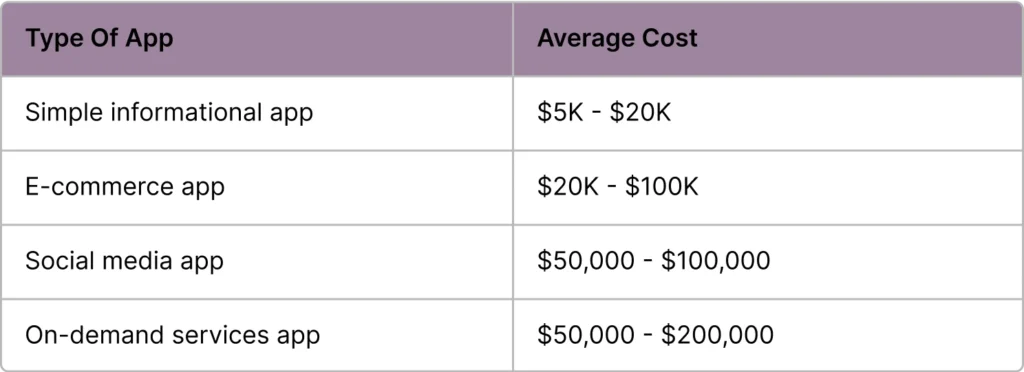
- Simple informational app:
An informational app is usually a simple application that has just minimal features like displaying the company information, contact details, etc. They are simple to build and have no advanced features. Such simple informational apps like Twitter or Facebook may be developed at average costs varying between five thousand dollars to twenty thousand dollars, depending upon the design complexity and application platforms.
- E-commerce app:
E-commerce applications have more complex procedures, including product catalog management, safe payment portals, shopping mall integration, and client accounts management. Generally, the cost to develop an average e-commerce app varies between $20k & $100k depending on its sophistication level and platforms.
- Social media app:
Running social media apps is not an easy gig, as we need to keep track of a huge amount of work at the backend. The development cost of a social media application can vary anywhere between $50,000 and half a million dollars or even higher based on its features, integrations, and the platform(s) it has been developed for.
Additional cost considerations
- Marketing and user acquisition:
Developing an app is only the first step; marketing and user acquisition are crucial for its success. The cost of marketing and user acquisition can vary depending on the target audience, competition, and marketing channels chosen. Businesses should allocate a budget for activities such as app store optimization, social media advertising, influencer marketing, and paid user acquisition campaigns.
- Ongoing server and hosting expenses:
Mobile apps require server infrastructure to handle user data, store content, and facilitate communication between the app and external services. The cost of servers and hosting can vary depending on the expected traffic, scalability requirements, and the choice between cloud hosting or dedicated servers. Businesses should consider the ongoing server and hosting expenses while planning the budget for their mobile app.
Ways to optimize app development costs:
1. Prioritizing features and functionalities:
Identify the core features that are essential for your app’s minimum viable product (MVP). Focus on developing these features first and gradually add more functionalities based on user feedback and market demand. This approach helps in managing costs by avoiding unnecessary development work.
2. Agile development methodologies:
There are many approaches that could be used that would help to keep app development costs significantly down. For instance, implementing the adoption of agile methods like Scrum or Kanban has been shown to be a great way to save money without compromising on efficiency. Iterative development is important here, meaning that an MVP can be released fast in order to improve the application during its lifecycle process.
3. Using app development frameworks and templates:
Using app-developing frameworks and templates saves time and money. Such frameworks include ready-made components and functions that are customizable, allowing you to build only essential features, eliminating from zero.
4. Outsourcing development to cost-effective regions:
By outsourcing app development to developing nations with cheap labor, e.g., India or any other Eastern European country, one can incur relatively low development costs. Nevertheless, only a dependable development partner with consistent success can guarantee quality and on-time delivery.
5. Continuous testing and quality assurance:
By investing in continuous testing and quality control throughout the development cycle, more problems can be discovered and corrected before extra work is needed for bug repairs and post-launch amendments.
Wrapping Up
The cost of developing mobile apps differs widely based on the level of sophistication, additional capabilities, and functionality needs for various types of applications. Businesses may, therefore, understand the average cost estimates in order to optimize cost by prioritizing features, utilizing Agile Methodologies, leveraging on frameworks, and outsourcing to cost-effective regions to develop high-quality applications within the available budget. Striking a balance of cost with app quality is critical in building a successful, usable, and profitable mobile app that will meet users’ expectations and drive business growth today and in the future.
Author
-

Kirtan is CEO of Whitelotus Corporation, an emerging tech agency aimed to empower startups and enterprises around the world by its digital software solutions such as mobile and web applications. As a CEO, he plays key role in business development by bringing innovation through latest technical service offering, creating various strategic partnerships, and help build company's global reputation by delivering excellence to customers.
View all posts



